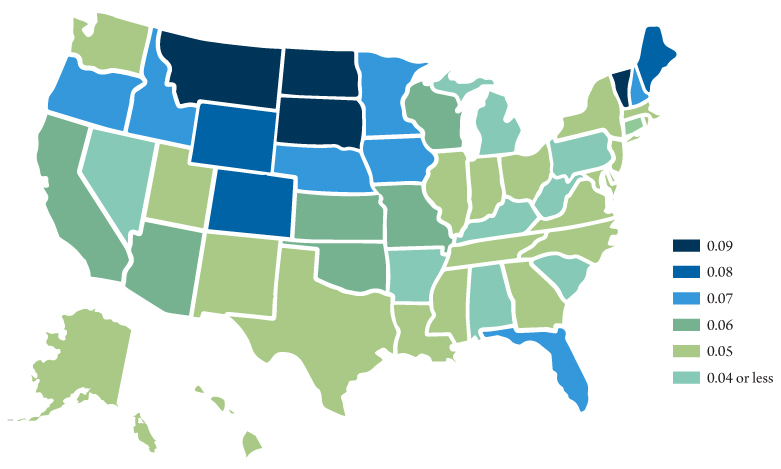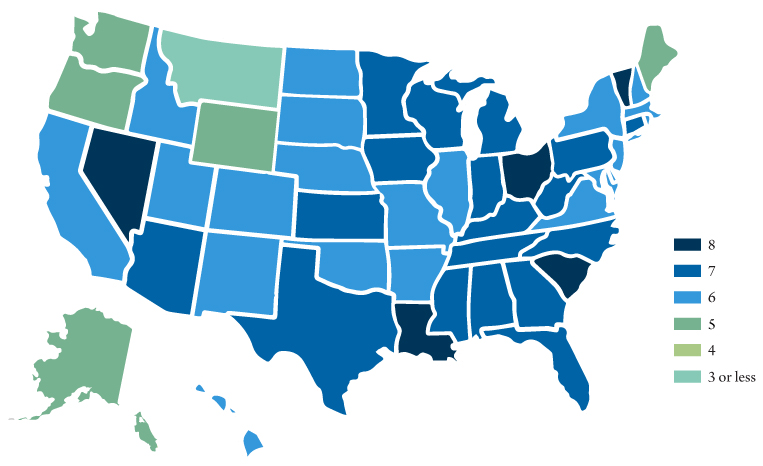Montana has a strong entrepreneurial spirit. The state has more entrepreneurs per capita than any other state and a business survival rate (businesses that survive their first five years) that ranks in the top 10. Some 3,400 Montanans start a new business each month, and more than half of those startups are still open five years later. To put it simply, Montana is among the nation’s leaders in entrepreneurship.
For several years, the state has ranked at or near the top of the Kauffman Index of Entrepreneurship, which is a leading indicator of new business creation. But Montana’s entrepreneurial culture is waning – a trend that’s consistent nationally. The share of Montanans who own a business as their main job has fallen nearly 50 percent since 1998. Similarly, the share of Montanans who work for young businesses has fallen from roughly 20 percent in the 1990s to 12 percent in recent years.
Entrepreneurs are a necessary part of the economy. As industries wax and wane, it’s entrepreneurs who fill the gap – they see a downturn and some capacity that’s going unutilized and figure out how to use it. And because entrepreneurs tend to run small businesses, they are able to quickly adjust to inevitable changes.
But a big difference between Montana’s entrepreneurs and those in other parts of the country is that startups in Montana tend to stay small and are less likely to scale up. The average size of a new firm is the lowest in the country, with an average of three employees compared to six nationwide.
A recent study on entrepreneurship by the Bureau of Business and Economic Research at the University of Montana found some positive signs of success, as well as some weaknesses in what would seem to be a robust entrepreneurial ecosystem.
Indicators of Success
1. Montana has more entrepreneurs.
The share of Montana’s population that owns a business is the highest in the country. In 2015, more than 10 percent of Montanans owned a business as their main job (Figure 1). Nationally, only 6 percent of Americans owned a business as their main occupation, and the rate of business ownership in Montana was more than double the rate found in 11 states.

2. Montana creates more entrepreneurs.
Consistent with its high rate of business ownership, Montanans become entrepreneurs at a higher rate. 3,400 Montanans start a business each month, ranking the state 4th in 2016 and 1st from 2013 to 2015.
3. New Montana firms survive.
The five-year survival rate for new Montana firms is good. In 2016, more than 51 percent of firms formed in 2011 were still operating. This ranks Montana ninth among all states and in the top 10 for survival rates in six of the past 10 years. However, only 42 percent of Montana firms formed in 2009 survived their first five years. This ranked Montana in the bottom 12 states.
Indicators of Weakness
1. New Montana businesses tend to be small.
The average new employer business, a firm less than a year old, has 3.9 employees. This is the smallest new firm size among all states (Figure 2). New employers in Montana have consistently been among the smallest in the country for the past 25 years, ranking among the fifth smallest each year since 1992. Plus, five years after opening the average business employed 6.6 people – the smallest average among all states.

2. New Montana businesses are less likely to scale-up quickly.
Since 2014, less than 1 percent of new Montana firms that started with fewer than 50 employees grew to have more during their first 10 years. The percent of firms that scale-up was the lowest in the country, and Montana has consistently ranked in the bottom five states for nearly 20 years.
3. Montana business owners have lower aspirations.
Only 54 percent of employer businesses in Montana say they aspire to grow their businesses profits or sales. This is the second lowest percentage among all states. Nationally, 64 percent of firms want to grow.
4. Montana has a lower density of high-growth firms.
The number of private Montana firms with at least $2 million in revenue, which have also grown by at least 20 percent a year for three straight years, is relatively low. Montana is ranked 43rd among all states.
5. Montana has a relatively small traded sector.
While Montana has a relatively large share of employer firms that sell primarily to customers outside their region, Montana ranks last in the share of employment in firms that sell primarily to non-local customers. Only 11.5 percent of Montana employment is in firms where local sales represent less than 25 percent of the total.
6. Montana has a disproportionate share of seasonal and part-time businesses.
Twenty-three percent of Montana firms operate less than 40 hours per week or less than 12 months per year, operate occasionally or are seasonal. This is 4 percent higher than the national level.
7. Montana firms are less likely to have a patent, trademark or copyright.
Only 1.3 percent of Montana firms have a patent (rank 47th), 4 percent have a copyright (rank 41st) and 6.6 percent have a trademark (rank 41st). In total, only 8.6 of Montana firms have any of these, which ranks Montana 47th among all states.
Overall, the state of entrepreneurship in Montana is a mixed bag. It continues to generate more entrepreneurs than other states and these entrepreneurs tend to create businesses that are more likely to survive. However, the firms tend to be small, have lower aspirations and are less likely to grow.
Recent growth in access to venture capital and business support services suggests that Montana may be on the verge of developing more high growth start-ups. But getting Montana’s entrepreneurs to succeed in creating high-growth firms with high wage jobs, will not be easy.


